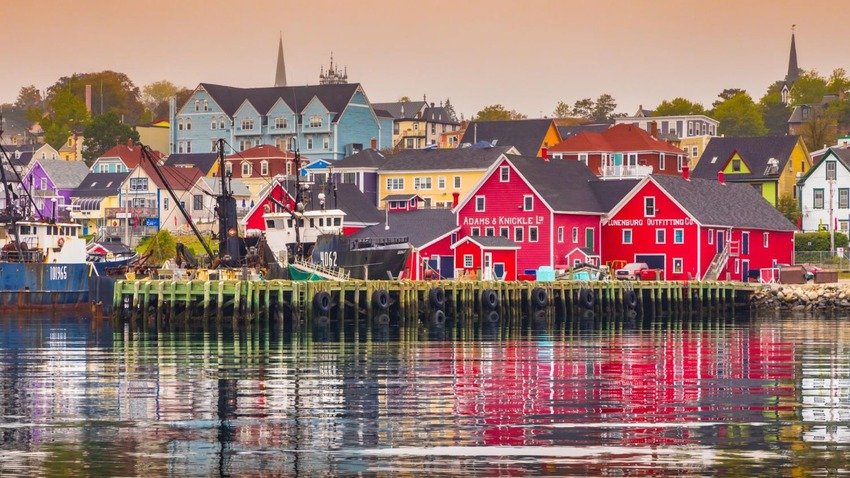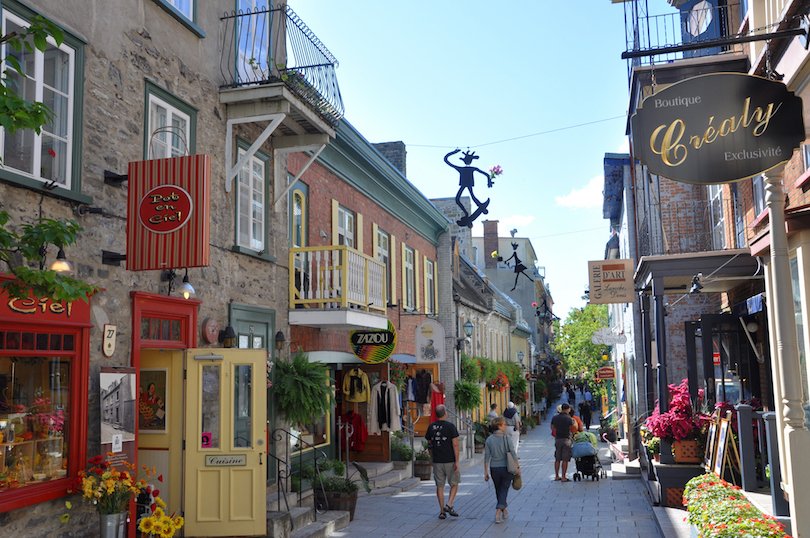6 Beautiful Places of Canada, it is the world’s second-largest country by land area, ranking just below Russia. It boasts expansive stretches of unbroken scenery, encompassing tundra in the northern regions and grassy prairies in the south. Moreover, Canada is home to the highest number of lakes of any country worldwide. Notably, the Great Lakes, including some of the largest ones, are situated within its borders, along with a section of the majestic Rocky Mountains.
The contemporary urban centers of this country showcase a rich heritage of successive waves of immigration, spanning from Europe to Asia. This has resulted in a multicultural landscape within its cities. However, it is important to note that the population of this country is merely one-tenth of that of the United States. Undoubtedly, wilderness reigns supreme in this land.
Atlantic Provinces is one of the 6 Beautiful Places of Canada

Canada’s eastern Atlantic Provinces region is comprised of four provinces: Nova Scotia, Prince Edward Island, New Brunswick, Newfoundland, and Labrador. This region is rich in history and culture, with influences from English, Irish, Scottish, and French settlers. The French established a colony called Acadia in the early 17th century.
Newfoundland and Labrador are known for their rugged scenery and low population, while Nova Scotia boasts beautiful beaches and charming towns along the shoreline. Halifax, the largest city in the region, is situated in a natural harbor and served as the historic entry point for European immigrants to Canada.
New Brunswick is the only officially bilingual province in Canada, with both English and French spoken. The city of Fredericton, with its pretty historic district, is a popular destination. Prince Edward Island, Canada’s only island province, is known for its farmland, sandy beaches, and dunes.
British Columbia

British Columbia, located in western Canada, is bordered by the Rocky Mountains to the east, Alberta to the east, Yukon to the north, Northwest Territories to the northeast, the United States to the south, and the Pacific Ocean to the west.
Vancouver Island, the second most populated area in the province, is situated in the southwestern part. The provincial capital, Victoria, is located on the southern tip of the island and boasts British colonial architecture and a well-preserved Chinatown.
However, the most renowned city in the region is Vancouver. Known for its multiculturalism, Vancouver showcases a vibrant Asian influence, a skyline filled with skyscrapers, and a relaxed atmosphere.
Beyond the urban centers, British Columbia offers a sense of remoteness. It is an ideal destination for activities like hiking, wildlife spotting, and skiing, particularly in the famous town of Whistler. As you venture further north, the wilderness of Northern British Columbia unfolds, with historic Goldrush communities scattered across the rugged Cariboo region.
The North

The North, a remote region on Earth, encompasses the majority of Canada’s landmass. Stretching into the Arctic Circle, it includes the provinces of Yukon, Northwest Territories, and Nunavut, with a total population of approximately 100,000 inhabitants.
The North is predominantly inhabited by Inuit communities, although the Gold Rush had a significant impact on the region, attracting settlers in search of their fortunes. Dawson City, situated in the Yukon, is merely a city in name, as it is home to only 30,000 people.
The Northwest Territories cover a vast area, boasting numerous national parks that provide a habitat for black bears and caribou amidst expansive wilderness.
Nunavut, meaning ‘Our Land’ in Inuktitut, surpasses Mexico in size but comprises a mere 0.02% of its population. Coastal villages are scattered across the tundra, yet the region remains largely desolate. Ellesmere Island is located just a few hundred kilometers away from the North Pole itself.
Quebec

Quebec, the second-most populous province in Canada, is unique in that it is the only province in the country that is monolingually French. The French-speaking majority has ensured that not only the language but also the French culture has been preserved here. Quebec City, the capital of the province, is a charming old town with remnants of its original city walls and the sprawling Fairmont Le Château Frontenac. Montreal, on the other hand, is the largest city and the world’s second-largest Francophone city after Paris.
It boasts skyscrapers, historic riverfronts, towering cathedrals, and botanic gardens. The rural region of Chaudiere-Appalaches is characterized by quaint villages, agriculture, and watermills, and its beautiful parks are perfect for bike rides, especially during autumn. The Charlevoix area boasts mountain scenery and has been a popular vacation spot since the 1760s. Parc national des Grands-Jardins offers many opportunities for hiking, including the dramatic Mont du Lac des Cygnes.
Ontario

Ontario, one of Canada’s provinces, is home to two major cities that are significant in the country’s urban landscape. These are Ottawa, the capital city, and Toronto, the most populous city in Canada. The majority of Ontario’s population, about 90%, resides in the southern part of the province. This region is also where the Great Lakes are located, including Lake Huron, Lake Erie, Lake Ontario, and Lake Superior, which is the largest freshwater lake globally.
Niagara Falls, a breathtaking water-based attraction, is also found in this region. It is where Lake Erie flows into Lake Ontario through the Niagara River, creating the world’s most powerful waterfall that produces six million cubic feet of water every minute. Toronto, situated on the northwestern shore of Lake Ontario, is a multicultural and cosmopolitan city that boasts of Victorian buildings and modern structures like the CN Tower. Summers in Toronto are perfect for lounging on the beaches by the lakeside. On the other hand, Ottawa is known for its grand government buildings and winter ice skating on the frozen Rideau Canal.
Prairie Provinces

Despite its name, the Prairie Provinces are not just flatlands. This region boasts a diverse landscape that includes mountains, lakes, metropolitan cities, and even an arctic shoreline. Manitoba, for example, is bordered by Ontario, Nunavut, Saskatchewan, and the United States. Its capital, Winnipeg, experiences the coldest winter temperatures of any North American city. Saskatchewan, on the other hand, is mostly wheat-growing prairie and forest, with over 100,000 lakes and rivers. Interestingly, it does not participate in daylight savings like the rest of Canada. Finally, Alberta is home to Calgary, the gateway to the Rocky Mountains, and Edmonton, which features a beautiful riverside valley park with trails and wildlife.





